Mold is a massive problem indoors. It is typically seen as a fuzzy matter on dead fruits and vegetables, black spots on damp walls and furniture, and sometimes a thin orange layer on the kitchen drain. What exactly is mold? And how do you get rid of it once and for all?
Mold is a type of fungi that grows in the form of interconnected strands and is more prone to develop on dead organic matter such as fruits. It only becomes visible to the human eye when a colony of mold grows on a particular surface. Like plants have seeds, mold has spores that help it multiply and take hold in new areas.
What is it about mold that makes it so dangerous for you to have in your house? Well, it has some serious health effects on people who are exposed to it. Some people who are allergic to mold spores might experience a runny nose, irritated and watery eyes, rashes appearing on the skin, and other allergic symptoms.
Moreover, the elderly and the young may be more susceptible to the effects of mold on their health and may fall prey to asthma and allergies that make them a lot more sick than the average person. For this reason, indoor mold should be addressed promptly once it is discovered.

Inspecting for a mold problem is the first step to getting rid of it.
Even though it might sound a little far-fetched and confusing, the cleanest places can also have mold! Most people associate mold with a grimy matter that can only occur due to uncleanliness and dirt, but that is not entirely true. Even if you are a conscientious homeowner who keeps their home sparkling clean, there could still be mold hiding somewhere.
The question, however, is how do you check if your building is infested with mold? What you can do is look for areas where the conditions are right for mold to be growing.
Here are some of the critical conditions for mold growth:
Mold thrives in areas where there is excess water, either physically resting in materials or as humidity in the air. By reducing the moisture levels in your home, you can decrease the chances of developing mold. Although it sounds complex, it is straightforward to bring down the humidity and moisture levels in a home with the help of ventilation and to make use of humidifiers.
Since the optimal conditions for mold growth are a higher (warmer) temperature and lack of ventilation, both should be avoided. There are multiple ways that you can improve your home's ventilation:
If your building has recently been flooded, there is a strong chance that it will develop mold. To stop mold growth after your home floods, you must take adequate measures and ensure that there is no water or moisture left in your house, which can serve as a breeding ground for the mold.
The most common cause of household mold is the lack of maintenance of the building. There are many signs that one can look out for while checking for decay. There may be water stains, a musty smell, or cracks in walls and wallpaper. These may occur due to the leakage or drainage of pipes that are not immediately accessible. One must call a professional to look at these leaks and fix them before the mold situation grows out of hand.
People can get confused when figuring out if they have a mold problem or just some regular house issues. However, it is pretty easy to figure out if you have mold spreading in your house.
There are sure signs and symptoms that you can look out for to ascertain if your house is infested with mold.
You can also determine if your house has a mold problem by looking at your family's health condition. If you or your family is facing any of these health issues, it might indicate the presence of mold in your house.
Here is what you can do if you suspect mold in your house:
To save you time, money, and energy, call professionals as they can provide full evidence of mold in your house and the complete picture of mold infestation along with a solution to it.
It is true that there are other alternatives, such as purchasing a mold testing kit, but the truth is that these kits can be uninformative at best, as they can only indicate the presence of mold, but not the mold type, amount, or places where mold is growing and other such factors.
Here is a list of places to check for mold in your house:
Whether you merely suspect mold or know it's a problem for sure, consider calling professionals to help with eradicating mold growth and nipping the problem in the bud. Mold growth can be a little hard to get rid of, but by taking the proper steps, you will be able to do it in no time!
If you think performing mold remediation is a hard thing for you to do, call on a professional team to take care of it for you.
After you hire mold remediation professionals, you want to make sure that the mold won't come back. There are specific ways to help make your home less hospitable to mold growth.
If you have mold growth issues in your house, you need to deal with this problem as soon as possible. There are serious concerns related to mold being present in your home.
Not only can mold affect the health of your house residents, but it can also deteriorate the state of your building. Only mold treatment (not removal, which is only cleaning) can assist in permanently resolving this issue.
Hire FDP Mold Remediation to carry out mold remediation for you. We are currently offering our services in DC, MD, NOVA, Dallas/Fort-Lauderdale, TX, Miami, FL, and NY & NJ. Call us at 877-421-2614 to learn more.



